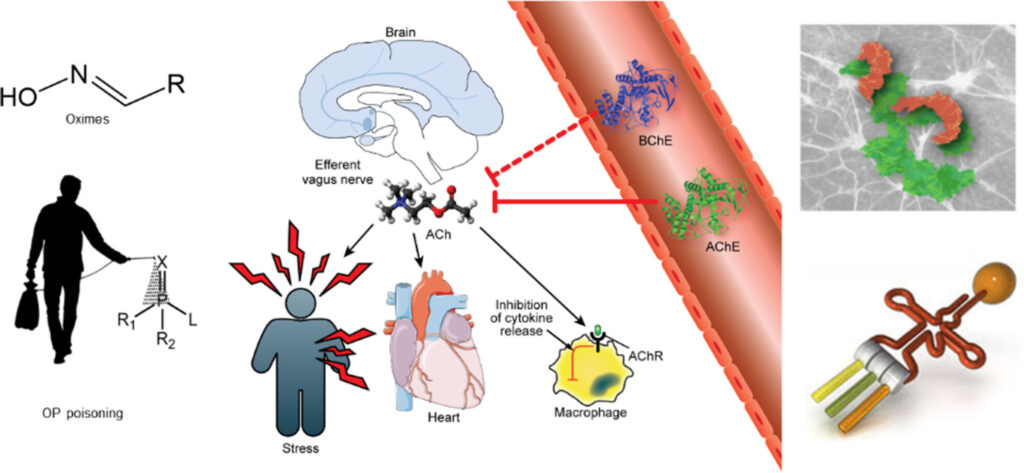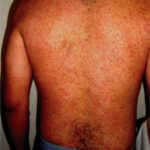Muscarine toxicity is a form of poisoning caused by ingestion of mushrooms containing muscarine, a naturally occurring alkaloid that overstimulates the parasympathetic nervous system. It leads to excessive activation of muscarinic receptors, causing symptoms such as sweating, salivation, bronchoconstriction, and bradycardia. Prompt medical intervention is crucial to prevent severe complications.

Causes of Muscarine Toxicity
Muscarine toxicity primarily occurs due to the consumption of toxic mushrooms, particularly those belonging to the Inocybe and Clitocybe genera. Unlike some mushroom toxins that affect the liver or kidneys, muscarine specifically targets the autonomic nervous system, leading to cholinergic syndrome.
Common Mushrooms Containing Muscarine
- Inocybe spp. (e.g., Inocybe fastigiata)
- Clitocybe dealbata (Ivory Clitocybe)
- Clitocybe rivulosa (Fool’s Funnel)
Pathophysiology
Muscarine acts as an agonist at muscarinic acetylcholine receptors, leading to excessive parasympathetic stimulation. The primary mechanism of toxicity is the overstimulation of muscarinic receptors in the nervous system, which results in increased glandular secretion, bronchoconstriction, and cardiovascular effects.
Symptoms of Muscarine Toxicity
Symptoms of muscarine poisoning typically appear within 30 minutes to 2 hours after ingestion and are characterized by cholinergic crisis.
Early Symptoms
- Profuse sweating (diaphoresis)
- Excessive salivation (sialorrhea)
- Lacrimation (tear production)
- Nausea, vomiting, and diarrhea
Cardiovascular and Respiratory Effects
- Bradycardia (slow heart rate)
- Hypotension (low blood pressure)
- Bronchoconstriction (wheezing, difficulty breathing)
- Pulmonary edema in severe cases
Severe Complications
- Respiratory distress
- CNS involvement (confusion, seizures in rare cases)
- Cardiovascular collapse (rare but life-threatening)
Diagnosis of Muscarine Toxicity
Diagnosis is primarily clinical, based on history of mushroom ingestion and characteristic cholinergic symptoms.
Diagnostic Approaches
- Clinical Examination: Evaluation of excessive secretions, bradycardia, and respiratory distress.
- Mushroom Identification: If possible, identification of the ingested species.
- Laboratory Tests: While not specific for muscarine, tests may include:
- Blood gases (to assess respiratory function)
- Electrolyte panel (to check for dehydration from vomiting/diarrhea)
- Acetylcholinesterase activity (to rule out organophosphate poisoning)
Treatment and Management
First-Line Treatment
- Atropine Administration:
- Atropine is the primary antidote, as it competitively inhibits muscarinic receptors.
- Dosage: 0.5–2 mg IV, repeated as necessary until symptoms resolve.
- Supportive Care:
- Oxygen therapy for respiratory distress
- IV fluids to maintain blood pressure and hydration
- Anti-emetics for nausea and vomiting
Hospitalization Criteria
- Severe bradycardia or hypotension
- Respiratory distress requiring ventilatory support
- Persistent GI symptoms causing dehydration
Prognosis
With prompt treatment, muscarine poisoning has a favorable prognosis. Most patients recover fully within 24 hours with appropriate medical care.
Prevention of Muscarine Poisoning
- Avoid Foraging Wild Mushrooms: Unless identified by an expert, wild mushrooms should not be consumed.
- Education and Awareness: Informing the public about toxic mushroom species can prevent accidental ingestion.
- Proper Handling of Suspected Mushrooms: If accidental ingestion occurs, bringing a sample to the hospital can assist in diagnosis.
Muscarine toxicity is a potentially serious but treatable condition caused by the ingestion of certain wild mushrooms. Early recognition of symptoms and prompt administration of atropine are key to successful management. Education on toxic mushrooms remains the most effective strategy for prevention.

